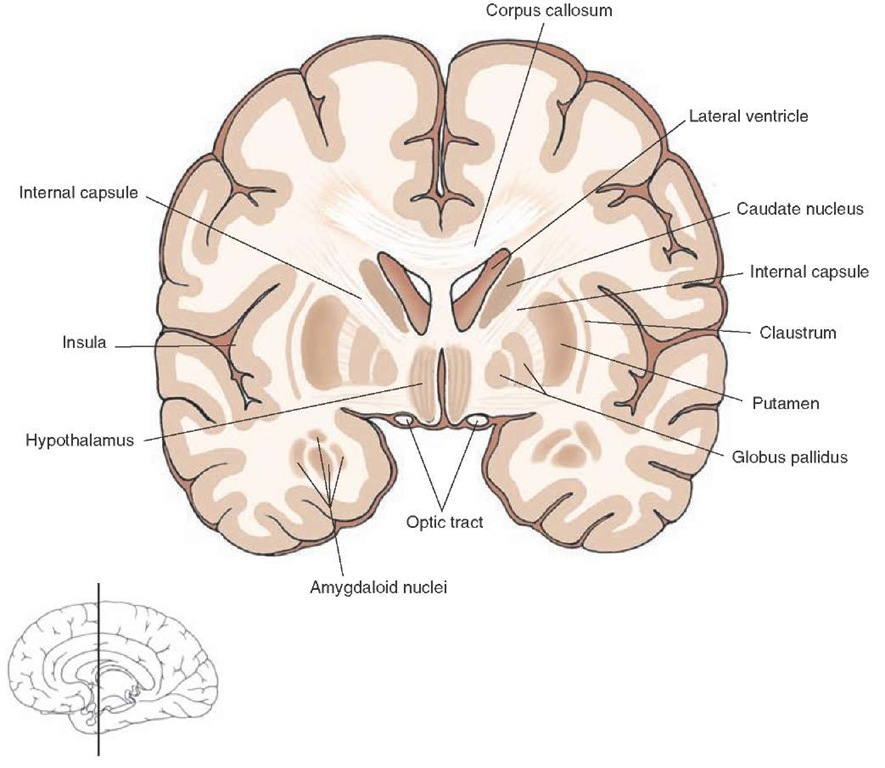|
The cortex communicates with the brainstem using several types of cortico-bulbar axons that terminate in:
- motor nuclei of the cranial nerves
- pontine nuclei that project to the cerebellum
- the red nucleus of the midbrain, the origin of the rubro-spinal tract
- the brainstem reticular formation, the origin of the reticulo-spinal pathways
Pathways from the face and neck area of the motor cortex project to motoneurones in the brainstem (hence the term cortico-bulbar tract). They innervate motor nuclei including the facial and trigeminal nerve nuclei, that are concerned with the muscles of facial expression and mastication respectively; and muscles in the tongue and neck.
For muscle groups below the eyes, the cortico-bulbar tracts are crossed, so one side of the brain controls the muscles on the opposite side of the face and neck. The cranial nerves involved are the accessory and hypoglossal nerves, innervating the muscles of the neck and tongue.
However, for the upper part of the face, innervated by the facial nerve, the motoneurones are innervated from both sides of the cortex; this involves the part of the facial nucleus innervating the forehead and eyelids. In contrast the part of the facial nerve nucleus that innervates the lower part of the face- cheek and lips - are innervated only from the contralateral cortex.
Significantly the eyebrows can be raised on both sides of the face in many patients with a stroke (because of the bilateral innervation of these motoneurones), unlike the muscles of the lower part of the face, which are paralysed on the side opposite the cerebral lesion.
In contrast, a lower motoneurone lesion to the facial nerve however paralyses all muscles on one side of the face (as in Bell's Palsy).
|
